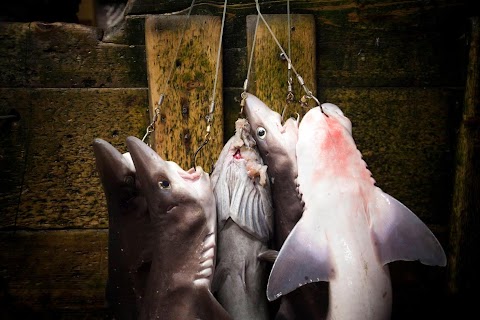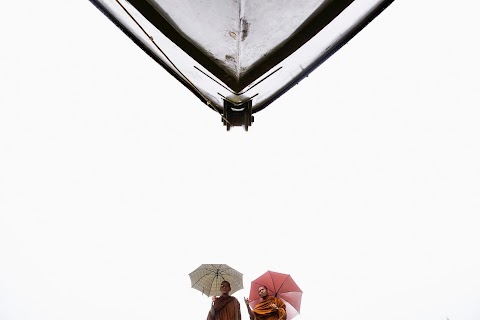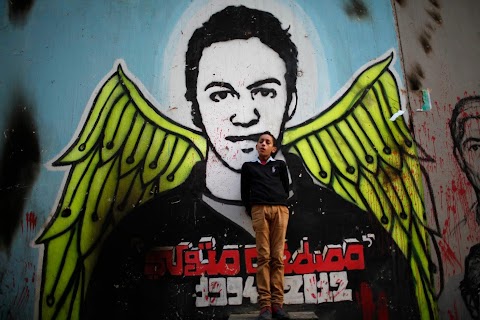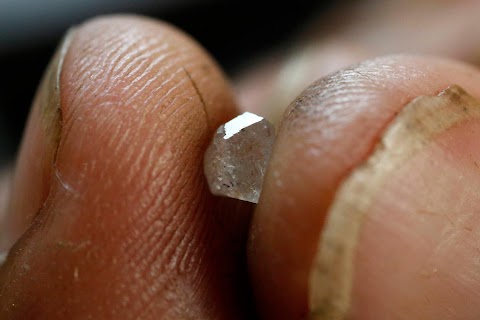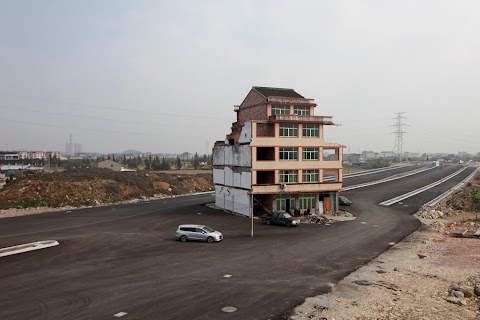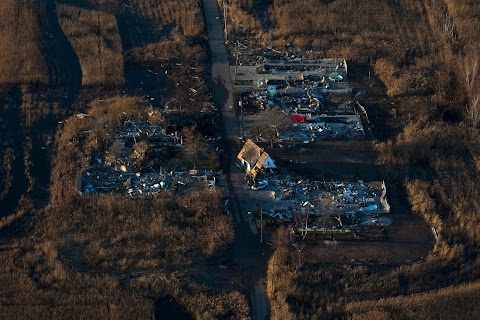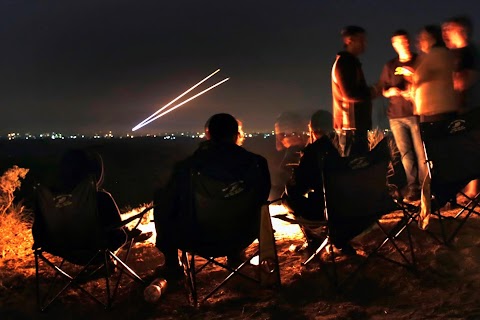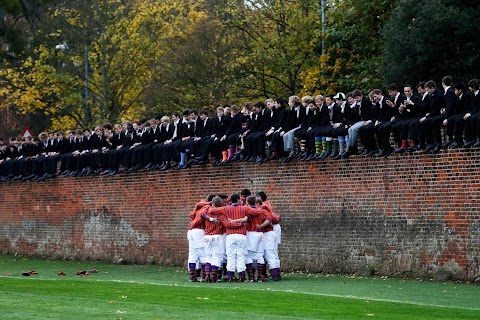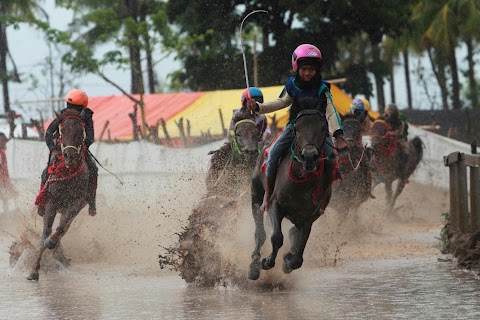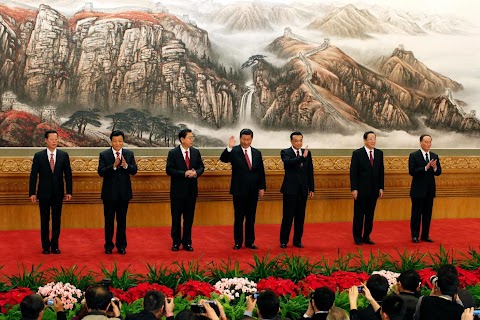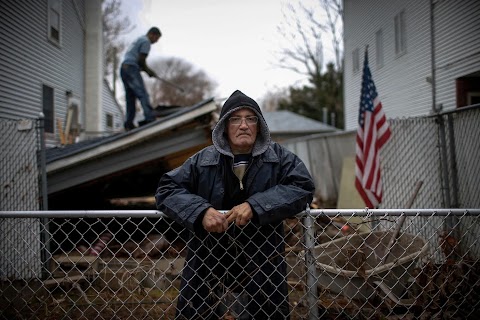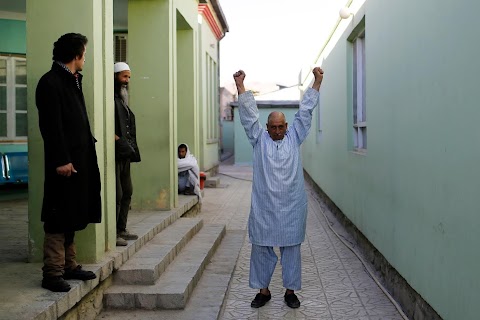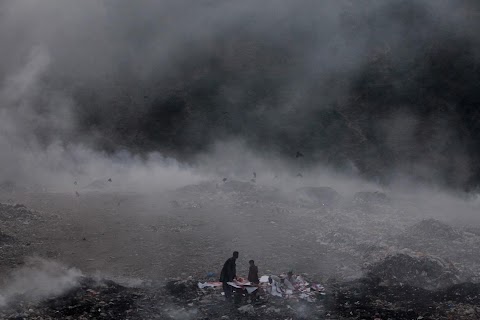
Changing climate
 Akhtar Soomro
Akhtar Soomro
"No one is immune to climate change - rich or poor. It is an existential challenge for the whole human race,” said U.N. Secretary-General Ban Ki-moon, speaking during the international climate talks in Doha that ended Dec. 7.
The scale of the issue is indeed huge. Human beings' impact on their environment is affecting societies around the globe - from these residents at a dumping ground in Pakistan, to citizens in the world's richest cities.

Superstorm Sandy, which blasted New York and parts of the U.S. east coast this autumn leaving 132 dead and thousands homeless, was judged by some to be a wakeup call to the effects of global warming.
Studies predict that devastation from natural disasters will increase as global average temperatures rise, causing melting ice caps, rising sea levels and making extreme weather more likely. According to a report this year commissioned by 20 governments and conducted by humanitarian organisation DARA, more than 100 million people will die by 2030 if the world fails to tackle climate change.
AUDIO TRACK: Speaking at the current U.N. climate talks in Doha, the Executive Secretary of the U.N. Framework Convention on Climate Change, Christiana Figueres, talks about the effect of extreme weather events like Sandy on negotiations.
Slideshow

The sun is blurred by exhaust from the chimneys of a power station on the outskirts of Shanghai. The release of gasses such as carbon dioxide, methane and nitrous oxide into the atmosphere traps heat and warms the planet, causing melting ice caps, rising sea levels and increasing the likelihood of extreme weather.

An Afghan man works at a brick factory outside Kabul in 2009, as black smoke belches out of the chimneys. The problem of greenhouse gas emissions has only become more severe since the picture was taken; the World Meteorological Organization said this month that atmospheric volumes of greenhouse gases blamed for climate change hit a new record last year.

A Chinese woman wears a scarf to fend off dust as she rides a bicycle in Beijing. Smokestack emissions, vehicle exhaust, dust and aerosols fill the air of many cities in China. Chinese authorities have pledged to spend $56 billion by 2015 to curb air pollution.

Dark clouds pass over downtown Miami. The U.N. Intergovernmental Panel on Climate Change (IPCC) said in a 2011 report that as the Earth’s climate warms, an increase in heat waves is almost certain, while heavier rainfall, more floods, stronger cyclones, landslides and more intense droughts are likely across the globe this century.

Workers from "APB BirdLife Belarus", prepare equipment for measuring carbon dioxide gas in a marsh near the village of Bartenikha. According to the United Nations Environment program, the concentration of gasses in the atmosphere that contribute to global warming has risen by about 20 percent since 2000.

A plastic bottle lies on cracked land in the dried bed of Nicaragua's Las Canoas Lake. As a result of global warming: "There is medium confidence that droughts will intensify in the 21st century" in "the Mediterranean ... central Europe, central North America, Central America and Mexico, northeast Brazil and southern Africa," said a 2011 report by the IPCC.

A windmill stands in a drought-stricken paddock in New South Wales in 2007 during one of Australia’s worst droughts in a century. The country’s longest river lost half its natural water flow due to evaporation and the overuse of water for dams and irrigation. A further 20 percent loss was predicted due to climate change by 2030.

Graffiti attributed to the street artist Banksy adorns a wall next to Regent's Canal. In 2007 the IPCC said global warming was "unequivocal." Nevertheless, a more recent report by the Reuters Institute for the Study of Journalism found an increase in climate change skepticism between 2007 and 2009/10 in all but one of 12 international newspapers that it researched.

Climate activists "sunbathe" on the edge of a frozen fjord to make a statement about global warming's effect on the Arctic. The Arctic is warming at twice the rate of the rest of the globe due to emissions of greenhouse gases from burning fossil fuels, according to a U.N. panel of scientists. "Climate change is taking place before our eyes," said Michel Jarraud, the head of the U.N.'s weather agency.

A male polar bear carries the head of a polar bear cub that it killed and ate. Climate change has turned some polar bears into cannibals as global warming melts their Arctic ice hunting grounds, according to a U.S.-led global scientific study on the impacts of climate change.

A scavenger carries a bag of plastic cups collected from a polluted river. According to the World Wildlife Fund, 500 billion disposable cups are manufactured around the world every year.

Insects fly in a dump yard as a rag-picker collects scraps. Rapid emissions growth in China and India powered an estimated 2.6 percent rise in carbon dioxide emissions from industry this year.

A forest burns in eastern Sierra Leone, where population pressure, slash and burn methods and illegal logging mean the country's bountiful forests could disappear by 2018, according to the Forestry Ministry.

An aerial view shows a single tree on land that was previously jungle in Mato Grosso state, one of the Brazilian regions suffering from deforestation. Forests soak up and lock away large amounts of CO2, helping act as a brake on climate change. Yet deforestation is disrupting this cycle and is responsible for at least 10 percent of mankind's annual greenhouse gas pollution.

A destroyed bulldozer is seen in a burned area in the forest near a coastal town in Chile. Paying landowners to let forests grow is promoted by the United Nations as a viable way to fight global warming, but experts first have to puzzle out how to insure trees against destruction by storms, insects and illegal logging.

A sapling grows from a dead tree in a peatland area of a protected Indonesian forest. A study published last year by the company Maplecroft found that Indonesia was losing about 1 million hectares (2.5 million acres) of forest a year, an area about 13 times the size of Singapore. Last year Indonesia imposed a two-year moratorium on clearing forest.
How the world discovered global warming
300 BC - Theophrastus, a student of Greek philosopher Aristotle, documents that human activity can affect climate. He observes that drainage of marshes cools an area around Thessaly and that clearing of forests near Philippi warms the climate.
17th century - Flemish scientist Jan Baptista van Helmont discovers that carbon dioxide is given off by burning charcoal.
18th century - The Industrial Revolution starts, bringing rising use of fossil fuels.
1820s - French mathematician Jean-Baptiste Joseph Fourier suggests something in the atmosphere is keeping the world warmer than it would otherwise be, a hint at the greenhouse effect.
1830s - Swiss naturalist Louis Agassiz presents evidence of past changes in Alpine glaciers, pointing to ancient Ice Ages and showing that the climate has not always been stable.
1860s - Irish scientist John Tyndall shows that molecules of gases such as water vapour and carbon dioxide trap heat. He wrote that changes "could have produced all the mutations of climate which the researches of geologists reveal."
1896 - Swedish chemist Svante Arrhenius becomes the first to quantify carbon dioxide's role in keeping the planet warm. He later concluded that burning of coal could cause a "noticeable increase" in carbon levels over centuries.
1950s - U.S. scientist Charles Keeling sets up stations to measure carbon dioxide concentrations in the atmosphere at the South Pole and at Mauna Loa, Hawaii. The measurements have shown a steady rise.
1965 - U.S. President Lyndon Johnson tells Congress: "This generation has altered the composition of the atmosphere on a global scale through ... a steady increase in carbon dioxide from the burning of fossil fuels."
1988 - British Prime Minister Margaret Thatcher tells the United Nations: "The problem of global climate change is one that affects us all and action will only be effective if it is taken at the international level. It is no good squabbling over who is responsible or who should pay."
1988 - The United Nations sets up the Intergovernmental Panel on Climate Change (IPCC) to assess the scientific evidence.
1992 - World leaders agree the U.N. Framework Convention on Climate Change, which sets a non-binding goal of stabilising greenhouse gas emissions by 2000 at 1990 levels, a target not met overall.
1995 - The IPCC concludes for the first time that humans are causing global warming, saying: "The balance of evidence suggests a discernible human influence on global climate."
1997 - The Kyoto Protocol is agreed in Japan; developed nations agree to cut their greenhouse gas emissions on average by at least 5 percent below 1990 levels by 2008-12. The United States stays out of the deal.
2001 - The IPCC concludes it is "likely," or at least 66 percent probable, that human activities are the main cause of recent warming.
2001 - President George W. Bush notes the U.S. National Academy of Sciences says greenhouse gases are rising "in large part due to human activity." He adds: "Yet, the Academy's report tells us that we do not know how much effect natural fluctuations in climate may have had on warming. We do not know how much our climate could, or will change in the future."
2007 - The IPCC says it is "very likely," at least 90 percent certain, that humans are to blame for most of the observed warming trend of the past 50 years. It also said warming of the planet was "unequivocal."
2009 - A conference of 193 countries agree in December to "take note" of a new Copenhagen Accord to fight climate change, after U.N. talks in Denmark. The accord is not legally binding and does not commit countries to agree a binding successor to the Kyoto Protocol when its first stage ends in 2012. The conference did recognise "the scientific view that the increase in global temperature should be below 2 degrees Celsius" and "deep cuts in global emissions are required."
2010 - A deal among 190 nations to slow climate change throws a lifeline to U.N.-led talks.
2011 - U.N. climate talks in Durban, South Africa, agree to negotiate a new accord by 2015 that is "applicable to all" and will come into force from 2020.
2012 – U.N. talks are help in Doha, Qatar in an attempt to agree a symbolic extension to the Kyoto Protocol, which obliged 35 developed nations to cut their greenhouse gas emissions.
Factbox by Alister Doyle, David Cutler
